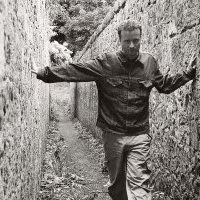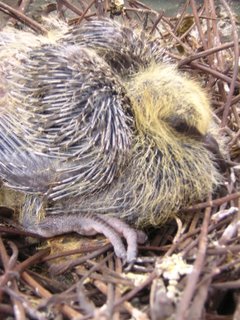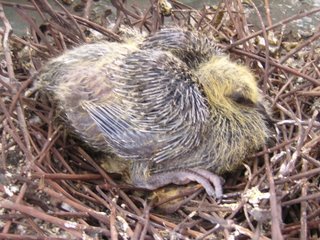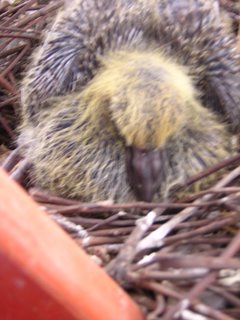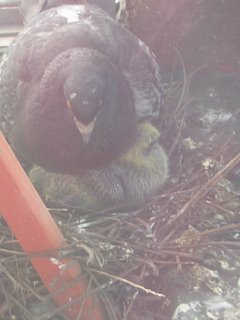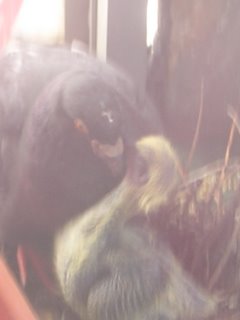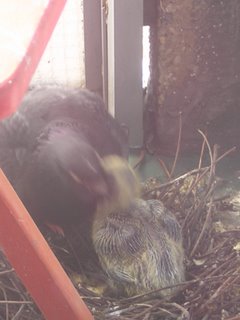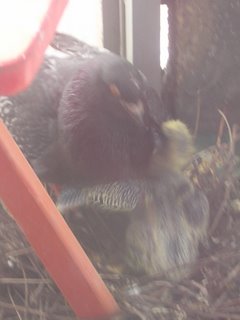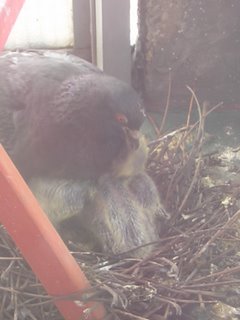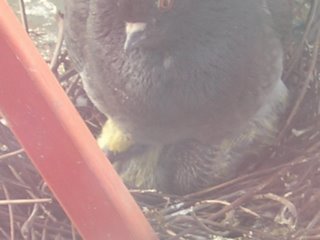Kevin Watch
Daily postings documenting a new born pigeon and his arrival into the world on a West London balcony. Pigeonwatch is a constant effort to protect a new born baby pigeon from the gourmet restaurants of the nearby upper classes of Notting Hill.
Sunday, April 30, 2006
Saturday, April 29, 2006
Pigeon 101
Pigeons build their nests with small twigs. A cock brings the nesting material to his mate, one piece at a time, and she builds the nest. Nests are usually well-hidden and hard to find.
Pigeons mate for life and rear their broods together, although if one dies the other will take a new mate. Once the simple nest is built, the female lays an egg and then another a day or so later. The incubation period for common pigeons is 17 to 19 days.
The female sits on the egg from late afternoon through the night until about 10AM. The male then takes over and does the day shift. Once the eggs hatch, both parents feed the young squabs. The first food is pigeon milk or crop milk, a cheesy substance that appears in the crops of the parents at hatching time and is fed for a week or so. These birdlets get something called "pigeon milk."
Both parents manufacture in their crop, or throat, a rich, fatty "milk" that looks much like yellow cottage cheese. They ralph this delicacy up and expel it into the throats of their darlings. After eight or 10 days of this ambrosial diet, the parents begin mixing in solid food and water.
Then the adults start regurgitating partially digested grains for the young. By the time the squabs are ready to fly, about 4 weeks, the father is doing most of the feeding. The squabs are fed for another week to 10 days after they are free-flying.
Friday, April 28, 2006
Welcome to Kevinwatch: Day One

So, a month or two back... this pigeon starts building this nest on our balcony. We thought it would be rude to shoo it away after his contsructive efforts and as it was winter.
We named the pigeon Kevin.
Over breakfast we said hello to Kevin each day and he ruffled his feathers and ignored us.
Then one day, Kevin laid and egg. Seems we are crap at avian recognition.
Today, Kevin hatched Kevin Jr.
In the interests of bird protection from the nearby 5star gastronomes, the following is a daily documentation of Kevin Junior's arrival into the big bad world via West London. If you come across this blog first, please hop on over to my main site: The Bookseller to the Stars.

